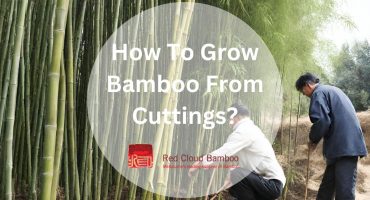
How To Revive a Bamboo Plant in Australia
Bamboo is a versatile plant that can grace gardens across Australia with its elegant structure and hardy nature. However, even the sturdiest of bamboos may struggle during unfavourable conditions.
If your bamboo plant or tree seems less vibrant than usual, there is still hope to revive it through some attentive care. This guide will walk you through the key steps to save a bamboo plants from declining health and revitalise its growth, including good quality water, fertilising, lighting conditions, pruning and addressing any pests.
Here is How To Save a Bamboo Plant From Dying:
-
Watering bamboo with quality water
Water is one of the most crucial factors for reviving a struggling bamboo plant. As with all plants, bamboo relies on water for hydration, nutrient transport and essential metabolic processes. Keeping the soil consistently moist provides bamboo with a constant supply of this vital resource. However, it’s not just the quantity of water that matters – the quality is equally important.
Bamboo has preferences when it comes to water pH and purity. It thrives in slightly acidic conditions between pH 5.5 to 6. This range assists with optimal nutrient uptake. Water that is free from build-up salts, chemicals or minerals prevents toxicity issues that can further stress bamboo. Maintaining the right watering habits, with clean water at the right frequency, is key to reinvigorating a drooping plant by replenishing moisture at a cellular level. Getting the H20 right lays the foundation for bamboo’s road to revival.
-
Try fertilizing the bamboo soil
Just as we need a balanced diet for our own health and wellbeing, bamboo depends on essential nutrients to recover its vigour. Falling foliage or a lack of new growth could indicate a bamboo is nutrient deficient. Targeted fertilising during the active spring and summer season is thus integral to reviving such a plant.
A nitrogen-rich organic or artificial fertiliser applied monthly will energise new shoot development. Potassium supplements help strengthen bamboo’s sturdy stalks and leaves. For prolonged nourishment, incorporate time-release fertiliser balls surrounding the base. Should a soil test point to any shortfalls, a tailored feeding plan can remedy specific deficiencies. By feeding its needs, gardeners aid bamboo in bouncing back to full luxuriance through an improved fertiliser regime.
-
Adjust bamboo’s lighting conditions
Like us, plants need doses of sunlight to thrive. Insufficient light could partially explain a bamboo’s decline. These graceful grasses thrive best in positions receiving full sun for at least six hours daily. However, shelter from the harshest midday rays may suit more delicate varieties. Reviving bamboo in shaded spots involves gradually increasing direct exposure, such as by selective pruning.
Overcast or indoor conditions warrant artificial assistance. A grow light positioned nearby for half a day mimics the sun’s nourishing wavelengths. Monitoring for signs of stress and adjusting as needed helps bamboos optimally photosynthesize once more. With light treatment alongside water and nutrients, gardeners empower bamboo’s natural revival process.
-
Pruning helps revive bamboo
Pruning bamboo plays a huge role in it’s bounce back by shaping its form. Dead, diseased, or overly congested growth gets removed through selective trimming. This lets sufficient sunlight and airflow circulate within the plant. Specific pruning practices suit different species’ habits. Clumping varieties may need culms (stems) cut back yearly, while runners get old canes removed to maintain playing field-like ground cover.
Summer is typically a safe time. Tools must be sterilised between each cut to avoid fungus spread. Strategic post-pruning applications like fertiliser or compost topper reinvigorate new follower growth. With a little gentle shaping, gardeners give bamboos the chance to re-establish full, lush decorative frames once more.
-
Check your bamboo for pests
No plant is pest proof, but diligent scouting helps revive bamboo by nipping issues early. Check for signs like yellow flagging canes or leaf chewers. Common culprits are snails, aphids and borers tunnelling stalks from within. At the first invader notice, targeted remedies stop further damage.
Neem oil or insecticidal soap safely squelches external suckers. For borers, carefully isolating and destroying infected culms limits spread. Keeping surroundings tidy also removes alternative pest hosts or entry points near bamboo. With revitalised defences and your attentive pest patrol, these graceful grasses gain their best chance to make a full recovery again under your gardening care.
Conclusion
By following these expert revival techniques, struggling bamboos under your care now have every opportunity to make a full recovery.
Red Cloud Bamboo is committed to supplying not only the hardiest varieties but also guidance on their comprehensive needs through every season and stage. Should you require any additional planting, care, or maintenance advice specific to your bamboo population, contact us today at 0418 552 170 to explore the possibilities. Or check out our blog for more information about bamboo. Let’s embrace the resilience and beauty of bamboo together.




